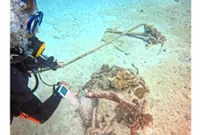Fabulous feat: Qiu (third from left, crouching) with her team posing with their rover.
SPACE may be far away but it is close to Qiu Jingyi’s heart.
And the 20-year-old has set her sights on contributing to Malaysia’s space endeavours.
Follow us on our official WhatsApp channel for breaking news alerts and key updates!
Thank you for your report!





